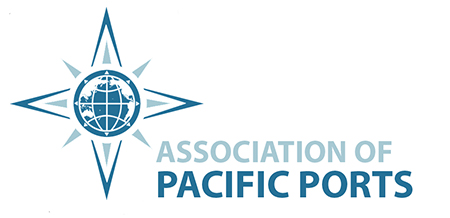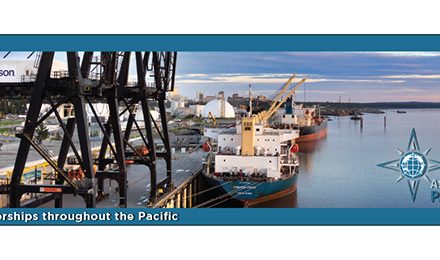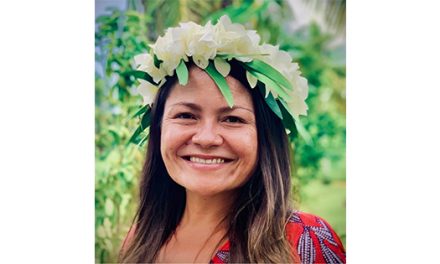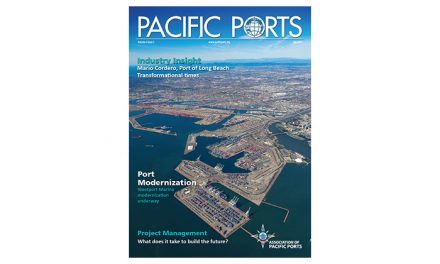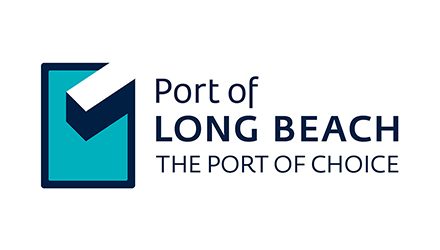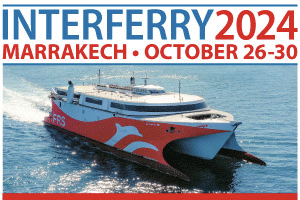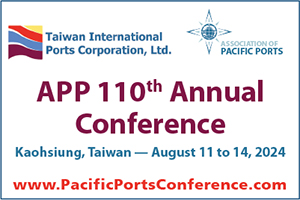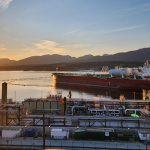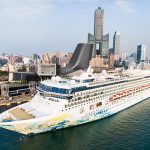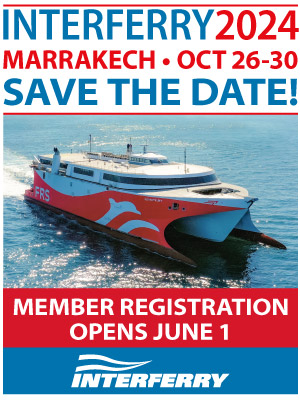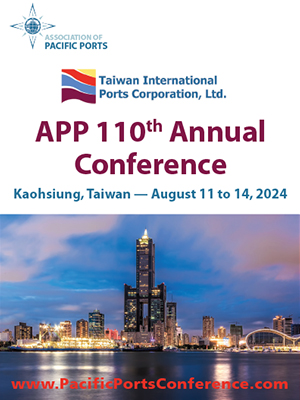It is with great pleasure that the Association of Pacific Ports welcomes the Port of Valdez, Alaska, as our newest Port Member. With a diverse and active waterfront that includes such notables as the terminus for the Trans-Alaska Pipeline, the largest Pink Salmon hatchery in the world, and (prior to the COVID-19 anomaly) the fastest growing cruise ship destination on the North American West Coast, Ports & Harbors Director Jeremy Talbott, and Port Operations Manager Jenessa Ables, were able to provide an overall update on current operations as well as ongoing plans to manage growth through an impressive Waterfront Master Plan.
Background
While the history of Valdez’s development can be traced as far back as the 18th century with English, Spanish and ultimately Russian explorers, it was the late 19th century and the advent of the Gold Rush that established this entry point of Prince William Sound as the American access route for explorers and prospectors who sought first gold, then other minerals such as copper and silver. Fast forward through cyclical booms and busts to the 1970s and the approval of the Trans-Alaska Oil Pipeline that we start to see Valdez’s modern maritime development start to take shape.
Over the last 30 years, noting the growth and development of the Alaska Marine Highway System, Richardson Highway, and the Valdez Pioneer Field Airport, Valdez has experienced steady and progressive growth. The Valdez Container Terminal, opened in 1982, has become a hub for heavy-lift projects, the commercial fishery, munitions imports for the entire State of Alaska, and support for the oil and gas industry for spill response logistics, inspections, and small repairs.
Current operations
Talbott joined the Port of Valdez in 2014 after a maritime career in Washington State that included Assistant Harbormaster for the Port of Friday Harbor as well as Battalion Chief for the Friday Harbor Fire Department, and subsequently the Marine Response Coordinator for San Juan Island EMS (Paramedic, Flight MEDVAC, Marine Ambulance Captain), an area that encompasses 134 islands, as well as a Sworn Reserve Deputy for the San Juan County Sheriff’s Office. At the Port of Valdez, he was promoted to Ports & Harbor Director in January 2017.
Ables started with the Port in 2012 as an administrative assistant before obtaining her Masters, International Logistics, and becoming the Port Operations Manager. Under their leadership, the Port has invested in expansion and modernization initiatives, provided increased economic opportunities for local businesses, and put in place plans that prioritize a series of projects for waterfront development over the next 30 years.
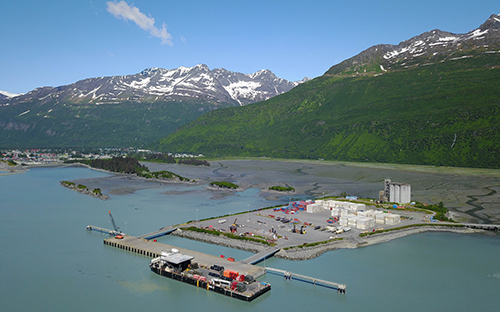
Valdez Container Terminal
The main operations for the Port include the Valdez Container Terminal, a deep-sea general cargo and container terminal with a 21-acre marshalling yard; the 3,000-acrea Valdez Industrial Park; a grain terminal with a total capacity of 522,000 bushels; the John Thomas Kelsey Municipal Dock featuring a 600-foot wooden wharf that can accommodate cruise ships of up to 932 feet LOA and a draught of 35 feet with an adjoining John Thomas Kelsey Plaza that serves both the cruise ship passengers and the community for special events; and the Alyeska Marine Terminal, the southern terminus of the trans-Alaska oil pipeline that currently receives about 600,000 barrels of crude oil daily which is then shipped to the West Coast and Gulf States.
One of the key features of the Port of Valdez that provides an attractive option for international shippers is its status as the first Port in Alaska to be a part of the Foreign Trade Zone. Secured areas at official ports of entry are considered outside the United States for Customs purposes to reduce red tape and overhead for importers and exporters expediting foreign commerce. Additionally, available undeveloped land in the thousands of acres sits adjacent to the Port and along the Richardson Highway, linking Valdez to the rest of the State.
Growth and future priorities
Talbott and Ables described a number of initiatives recently completed or currently underway that speak to the growth being seen in Valdez. “We’re seeing a lot of growth from the commercial fishing sector,” said Talbott. “The Valdez Fishing Development Association now has the largest Pink Salmon Fishery in the world, and Silver Bay Seafoods recently opened a new, modernized plant. Peter Pan Seafoods also has a plant with additional waterfront industrial property available that has deep-water access. To accommodate these and meet the increased demand, we’ve expanded the electrical connections out of the container dock and put in a back-up system. We also opened up another five acres of property on the back side of the terminal to provide more space for the commercial fishery.”
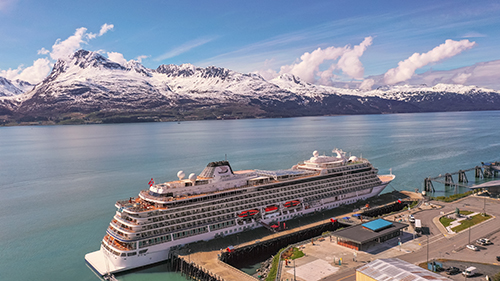
The John Thomas Kelsey Municipal Dock
Ables pointed to an active and, up until the pandemic struck, growing cruise ship sector for Valdez. “Our cruise industry has seen peaks and valleys over the last 30 years but in 2019, we had 13 calls from Viking, Windstar and Holland America lines,” she said. “While it’s difficult to know what the situation will be like in 2021, we’ve already got Viking and Windstar wanting to return.” Ables added that the Kelsey Dock and nearby area were engineered to be able to accommodate growth for cruise.
Valdez’s Commercial Boat Harbor, doubling capacity for commercial vessels, was completed, and opened in the summer of 2018 and the Port is currently in the design phase for reconstruction of the Small Boat Harbor. And a design and construction project for a new causeway for the Container Terminal is also in the works.
And that’s just for starters.
Working with the Ports and Harbors Commission, the City of Valdez released the Valdez Comprehensive Waterfront Master Plan in November 2019. The Plan identified five sites that have been prioritized for expansion, modernization, and redevelopment, while balancing the natural, public, and working components of the waterfront. Indeed, the guiding principles of the Plan set out goals that account for ensuring a first-class waterfront experience for both residents and visitors; preserving, enhancing, and expanding the diversity of amenities such as boating, fishing, sightseeing, and entertainment; and attracting new industries and businesses to create new jobs and develop a solid and stable economy for Valdez.
Perhaps the most exciting initiative for Talbott and the Port is the recently signed Memorandum of Understanding to look at the feasibility of bringing the A2A Railroad to Valdez. “The studies underway right now are looking at the potential to bring oil and gas as well as other bulk goods to the Port from Alberta and B.C.,” said Talbott. “We already have much of the structure in place to accommodate this and we don’t have issues t
hat other areas see, like the need for constant dredging.”
Given the careful planning and prioritizing that have been laid out for the future, it’s a safe bet that APP members will be hearing about many more successes for both the City and the Port of Valdez.
For more information, visit https://www.valdezak.gov/151/Port.
